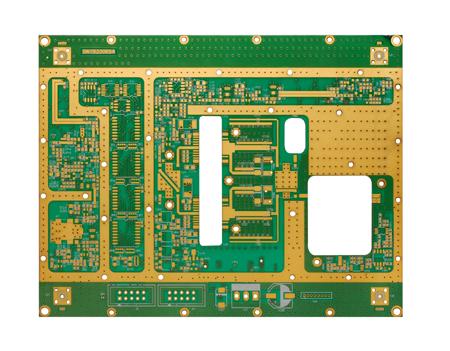PCB board, that is, printed circuit board, also known as printed circuit board, is a provider of electrical connections for electronic components. Its development has a history of more than 100 years; its design is mainly layout design; the main advantage of using circuit boards is to greatly reduce wiring and assembly errors, and improve the level of automation and production labor rate. The basic composition of the circuit board. The circuit board is mainly composed of pads, vias, mounting holes, wires, components, connectors, filling, electrical boundaries, etc. The main functions of each component are as follows:
PCB pads: metal holes for soldering component pins.
Vias: There are metal vias and non-metal vias, among which metal vias are used to connect component pins between layers.
Mounting hole: used to fix the circuit board.
Wire: The copper film of the electrical network used to connect the pins of the components.
Connectors: used to connect components between circuit boards.
Filling: used for the copper coating of the ground wire network, which can effectively reduce the impedance
Electrical boundary: used to determine the size of the circuit board, all components on the circuit board cannot exceed the boundary.
PCB substrate
The substrate is generally classified by the insulating part of the substrate. Common raw materials are bakelite, fiberglass board, and various types of plastic boards. And PCB manufacturers generally use a kind of insulating part composed of glass fiber, non-woven material, and resin, and then use epoxy resin and copper foil to press the "adhesive sheet" (prepreg) for use.
The common base materials and main ingredients are:

FR-1──Phenolic cotton paper, this base material is generally called bakelite (more economical than FR-2)
FR-2──Phenolic cotton paper,
FR-3──Cottonpaper, epoxy resin
FR-4──Wovenglass, epoxy resin
FR-5──Glass cloth, epoxy resin
FR-6──Masked glass, polyester
G-10──Glass cloth, epoxy resin
CEM-1──Tissue paper, epoxy resin (flame retardant)
CEM-2──Tissue paper, epoxy resin (non-flame retardant)
CEM-3──Glass cloth, epoxy resin
CEM-4──Glass cloth, epoxy resin
CEM-5──Glass cloth, polyester
AIN──Aluminum Nitride
SIC──Silicon Carbide
Basic circuit board production
Basic production can be divided into two major types of processes according to different technologies: elimination and addition.
subtraction method
Subtractive method is to use chemicals or machinery to remove unnecessary places on a blank circuit board (that is, a circuit board covered with a complete piece of metal foil), and the remaining space is convenient for the required circuit.
Screen printing: The pre-designed circuit diagram is made into a screen mask, the unnecessary circuit parts on the screen will be covered by wax or impermeable materials, and then the screen mask is placed on the blank circuit board, and then on the silk screen. The protective agent that will not be corroded on the oil on the net, put the circuit board in the corrosive liquid, the part that is not covered by the protective agent will be eroded away, and finally the protective agent is cleaned.
Photosensitive plate: Make the pre-designed circuit diagram on the transparent film mask (the easiest way is to use the transparencies printed by the printer), and the required part should be printed in an opaque color, and then on the blank line Coat photosensitive paint on the board, place the prepared film mask on the circuit board and irradiate it with strong light for several minutes. After removing the mask, use the developer to display the pattern on the circuit board, and finally it is the same as the screen printing method. Corrupt the circuit.
Engraving: Use a milling machine or laser engraving machine to directly remove unnecessary parts on the blank circuit.
Addition method
Additive method (Additive), now it is common to cover a substrate plated with thin copper in advance, cover it with photoresist (D/F), expose it by ultraviolet light and then develop it, expose the necessary places, and then use electroplating to remove the circuit board The copper thickness of the formal circuit is increased to the required specifications, and then a layer of anti-etching resist-metal thin tin is plated, and finally the photoresist is removed (this process is called film removal), and then the copper foil under the photoresist The layer is etched away.
Industry status
Since the production of printed circuit boards is in the latter half of electronic equipment manufacturing, it is called the downstream industry of the electronics industry. Almost all electronic devices need the support of printed circuit boards, so printed circuit boards are the product with the highest market share in the global electronic component products. At present, Japan, China, Taiwan, Western Europe and the United States are the main printed circuit board manufacturing bases.